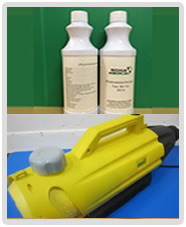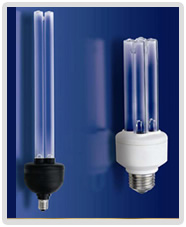
1. Is TiO2 coating harmless to humans? Is it harmless to pets?
Nano TiO2 liquid is completely harmless to human bodies and is actually used widely as a food additive.
2. After application, does it produce any odor?
No, it does not have any odor.
3. Does this Nano TiO2 liquid have a shelf life?
There is no shelf life. This solution should be stored in a dark, cool environment.
4. How is this Nano TiO2 liquid applied?
It can be brushed or sprayed onto surfaces.
When applied to fabrics via spray, a brush should be used to work the solution into the fabric.
5. After it is applied, how long does it last?
TiO2 PCO Solution has a service life of 1-2 years depending on actual site conditions.
6. Does Nano TiO2 liquid remove odors from the air? How about from fabrics?
When exposed to light, Nano TiO2 liquid will create -OH (hydroxyl radical) and O- (super oxide ions) which will decompose substances that creates the odor.
7. How does Nano TiO2 liquid prevent and remove contamination from surfaces?
They become oxidized by the photo-catalytic oxidation and float away as harmless substances.
8. Why does Nano TiO2 liquid have a sterilizing and anti-microbial effect?
Most microbes die quickly when any part of them comes in contact with a coated surface. In addition, Nano TiO2 liquid decomposes toxins that are discharged when microbes die (Verotoxins, Enterotoxins), rendering them into harmless vapors.
9. Exactly what type of odors will Nano TiO2 liquid eliminate?
It will remove virtually all and any type of odor from surfaces as treated surfaces become resistant to microorganisms, mold, bacteria, viruses, smoke, odors, etc.
10. Does it work in cold environments such as freezers?
Yes. Microbes that come in contact with a treated surface will cease to exist.
11. Does Nano TiO2 liquid get rid of cigarette odors from tar and nicotine that have penetrated surfaces?
Yes. If a second hand smoke contaminated surface (second hand smoke is known to have over 400 known cancer causing chemicals) is treated with TiO2 solution, the odor will soon disappear.
12. How does the intensity of light affect the ability of this Nano TiO2 liquid to create friendly oxidizers which purify the air?
As a characteristic of titanium dioxide, it starts to produce friendly oxidizer en mass when exposed to ultraviolet rays of 400nm range or lower. It is more affected by the intensity of the ultraviolet rays rather than the intensity of light itself per se. However, any air pollution, VOC, or odor that comes in contact with a surface treated with Nano TiO2 liquid will become oxidized.
13. What are some of the more popular applications for Nano TiO2 liquid?
Bathrooms, floor tiles, sinks, showers, car interiors, to remove and prevent tobacco odors, kitchen counters, furniture and carpets (especially if you have pets), curtains, mini-blinds, windows exposed to light, ceiling fans, car rims, white outdoor furniture, house gutters (keep them mold free), concrete or brick that you want to keep mold free, the list goes on and on.
14. Can Nano TiO2 be applied to carpets?
Yes, and with great results! Carpets treated with Nano TiO2 will resist not only odors and grime but also pests such as fleas. Carpets will last much longer as well.

1. What is UV light?
UV stands for Ultra-Violet light. Ultraviolet light represents the frequency of light between 200 nanometers (nm) and 400nm and cannot be seen with the naked eye.
Within the UV spectrum lie three distinct bands of light:
- UV-A (315nm to 400nm)
- UV-B (280nm to 315nm) that causes sunburn
-UV-C (200nm to 280nm), effective in microbial control.
2. Why is UV light germicidal?
Germicidal UV light (200nm to 280nm) deactivates the DNA of bacteria, viruses and other pathogens and thus destroys their ability to multiply and cause disease.
Research has demonstrated that within this UV-C band the most efficient frequency for microbial destruction is between 254nm and 265nm. Germicidal lamps that produce the majority of their output in this range will be the most effective in microbial control/destruction.
3. What are the benefits of UV-C light for indoor environments and air-conditioning systems?
A closed environment (indoors) with little or no exchange of outside air can become a breeding ground for potentially harmful pathogens such as moulds, bacteria, yeasts, and viruses.
A germicidal UV light system can significantly reduce the amount of airborne micro-organisms in ductwork and air space, helping to reduce possible health problems associated with inhaling microbials. UV-C light is also beneficial in keeping HVAC coils free of mould which increases system efficiency.
4. How much maintenance is required on a UV light product?
Lamps should be cleaned every six (6) months to remove any dust accumulation on the bulbs that might lessen the effectiveness of the UV-C light. Annual replacement of the bulb(s) is recommended. Most UV-C light systems should be left on continuously as turning them on and off ages the bulbs and power supplies.
5. Can germicidal ultraviolet be used to disinfect computer keyboards, phones, computer mice etc.?
Yes. Exposed solid surfaces of many devices may be sanitized by germicidal UV-C, but note that disinfection does not take place on internal components and surfaces. Proper precautions should be taken so that personnel will not be exposed to the germicidal ultraviolet rays. Bear in mind that some materials and plastics may degrade when repeatedly exposed to intense or prolonged ultraviolet exposure.





